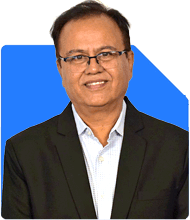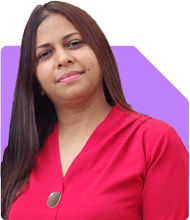Hi I am 33 years old and currently my mutual fund portfolio is Rs 4.51 lakh. My net salary after all deduction including loan is rs78000.
3000 in ppfas flexi cap.
5500 in uti elss
500 in uti nifty 50.
1500 in HDFC elss
Should I make any changes in my sip.?? My sole goal for sip is wealth gaon for long term.
I also have Rd 14500 monthly
Ans: Your current mutual fund portfolio is Rs. 4.51 lakhs, which is a solid start. You are investing Rs. 3,000 in a flexi-cap fund, Rs. 5,500 in an ELSS fund, Rs. 500 in an index fund, and Rs. 1,500 in another ELSS fund. Additionally, you have a recurring deposit of Rs. 14,500 per month. Your net salary is Rs. 78,000 after all deductions, including loans. With a focus on long-term wealth creation, it's important to assess whether your current investments align with your goals and if there are any necessary adjustments to maximize your potential returns.
Evaluating Your Current SIPs
Your Systematic Investment Plans (SIPs) reflect a mix of equity funds, including flexi-cap and ELSS funds. This combination provides exposure to both diversified and tax-saving investment options.
Flexi-Cap Fund Investment:
Your Rs. 3,000 SIP in a flexi-cap fund is a good choice.
Flexi-cap funds offer flexibility by investing across market capitalizations.
They allow fund managers to adjust the portfolio based on market conditions.
This can help in capturing growth opportunities in both large-cap and mid-cap companies.
Keep this SIP as it aligns with your long-term wealth creation goal.
ELSS Funds Investment:
You have significant investments in ELSS funds with a Rs. 5,500 SIP in one and Rs. 1,500 in another.
ELSS funds provide tax benefits under Section 80C.
These funds have a mandatory three-year lock-in period.
They invest predominantly in equity, offering potential for high returns.
Continuing with ELSS is advisable if tax-saving is an important part of your strategy.
Index Fund Investment:
You are investing Rs. 500 in an index fund.
Index funds track a market index and offer average returns.
They lack the flexibility to adapt to changing market conditions.
Actively managed funds have the potential to outperform index funds, especially over the long term.
Consider shifting this investment to an actively managed fund for better growth prospects.
Advantages of Active Management Over Index Funds
Index funds are often marketed for their low costs, but this comes with trade-offs.
Lack of Flexibility:
Index funds simply replicate an index without considering market dynamics.
They do not adapt to market trends or economic shifts.
Actively managed funds can change their portfolio to optimize returns.
Average Returns:
Index funds provide returns similar to the market.
They are not designed to outperform, just to match the index.
Actively managed funds, on the other hand, aim to beat the market through expert stock selection.
Higher Potential with Active Management:
Fund managers in actively managed funds use research and expertise.
They select stocks that have the potential for higher growth.
This can lead to better returns over time, especially in a long-term strategy like yours.
The Role of ELSS in Your Portfolio
You have a significant portion of your investments in ELSS funds. These funds are beneficial for tax-saving, but it's important to balance your portfolio for optimal growth.
Balancing Tax Benefits and Growth:
ELSS funds offer tax benefits, which is a great advantage.
However, they are locked in for three years, limiting your flexibility.
Diversify your portfolio with other types of funds to ensure growth beyond tax-saving.
Potential Overexposure to ELSS:
Having a large portion of your portfolio in ELSS may limit your exposure to other growth opportunities.
Consider diversifying into non-tax-saving equity funds for better long-term growth potential.
Reassessing Your Recurring Deposit
Your Rs. 14,500 monthly RD is a secure investment, but it might not align with your long-term wealth creation goal.
RD vs. Mutual Funds for Wealth Creation:
Recurring deposits offer guaranteed returns but at a lower rate.
They are more suitable for short-term goals or safety over growth.
For long-term wealth creation, equity mutual funds provide better potential returns.
Opportunity Cost of RD:
The money invested in RD could potentially grow faster in equity funds.
Consider reducing your RD contributions and increasing your SIPs in equity funds.
This shift can enhance your overall portfolio returns over the long term.
Suggested Adjustments to Your Portfolio
Based on your current investments and goals, some adjustments could help optimize your portfolio for long-term growth.
Increase Equity Exposure:
Shift funds from your RD to increase your SIPs in equity mutual funds.
Focus on funds with strong historical performance and a good track record.
This will increase your portfolio's growth potential.
Reduce Index Fund Allocation:
Consider discontinuing your Rs. 500 SIP in the index fund.
Reallocate these funds to actively managed equity funds.
This could enhance your portfolio's returns over time.
Diversify Beyond ELSS:
Continue with your ELSS funds for tax benefits, but avoid overconcentration.
Explore adding other equity funds, such as large-cap, mid-cap, or multi-cap funds.
This diversification will balance risk and enhance growth prospects.
Utilize a Certified Financial Planner:
Regular funds through a Certified Financial Planner offer ongoing guidance.
They can help in selecting funds that match your goals and risk profile.
Avoid direct funds as they may lack the personalized advice you need.
Final Insights: Building a Long-Term Wealth Strategy
Your current investment strategy shows a good foundation, but there is room for optimization to better align with your long-term wealth creation goal. Here's a summary of the suggested approach:
Increase Equity Investments:
Redirect funds from RD to SIPs in equity funds for higher growth.
Consider funds with a strong performance history and diversification.
Balance ELSS with Other Equity Funds:
While ELSS is beneficial for tax savings, diversify to reduce risk.
Add more non-tax-saving equity funds for broader exposure.
Reconsider Index Fund Investment:
Index funds provide average returns, which may not meet your long-term goals.
Actively managed funds have the potential to outperform, making them a better choice.
Seek Professional Guidance:
Investing through a Certified Financial Planner will provide tailored advice.
Avoid direct plans as they lack personalized support and strategic insights.
By making these adjustments, you can strengthen your portfolio and set a solid path towards your long-term wealth creation goals.
Best Regards,
K. Ramalingam, MBA, CFP,
Chief Financial Planner,
www.holisticinvestment.in

























